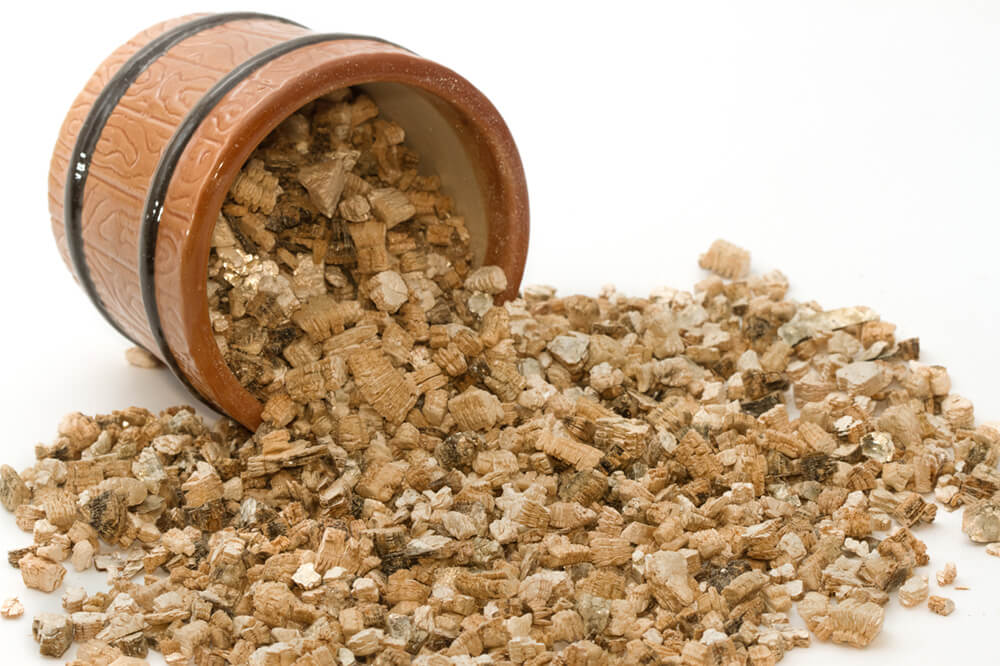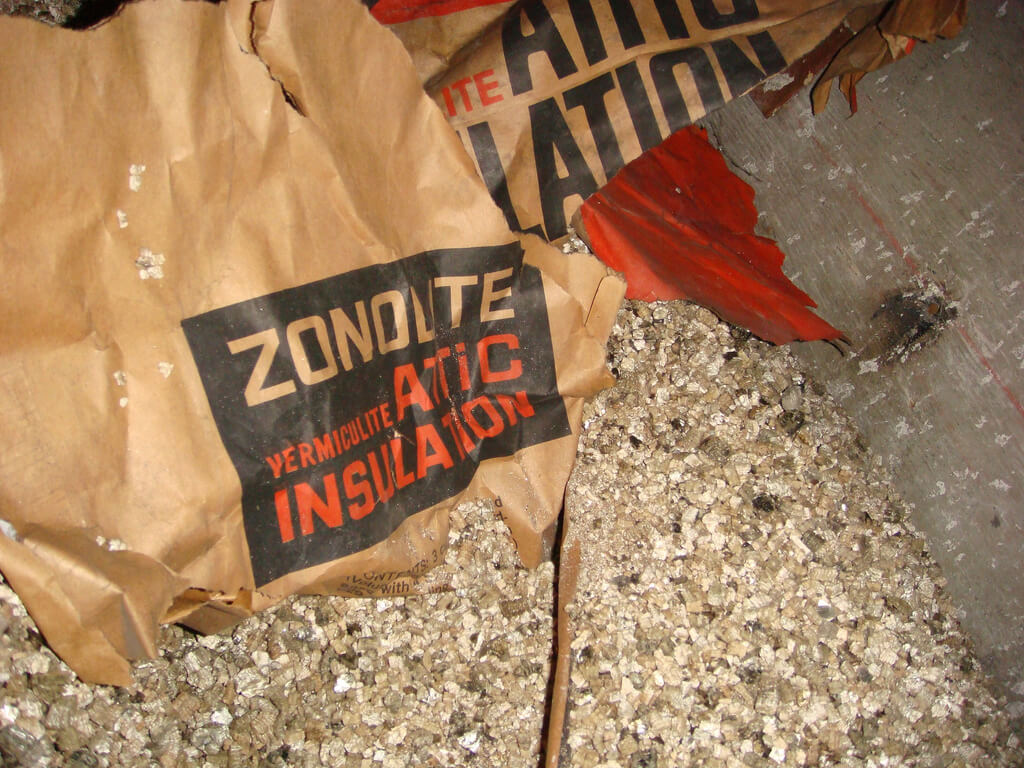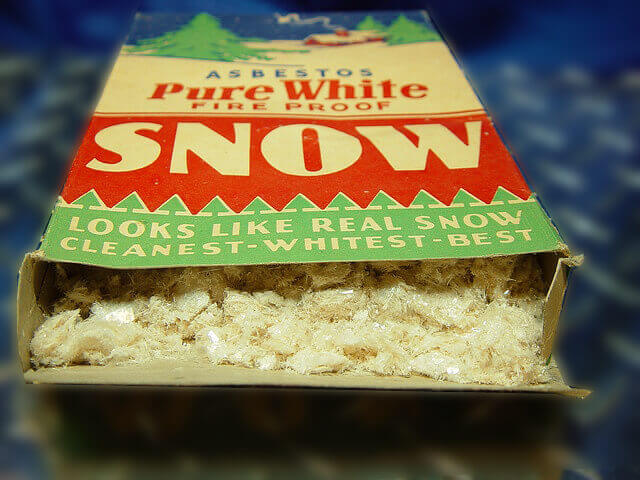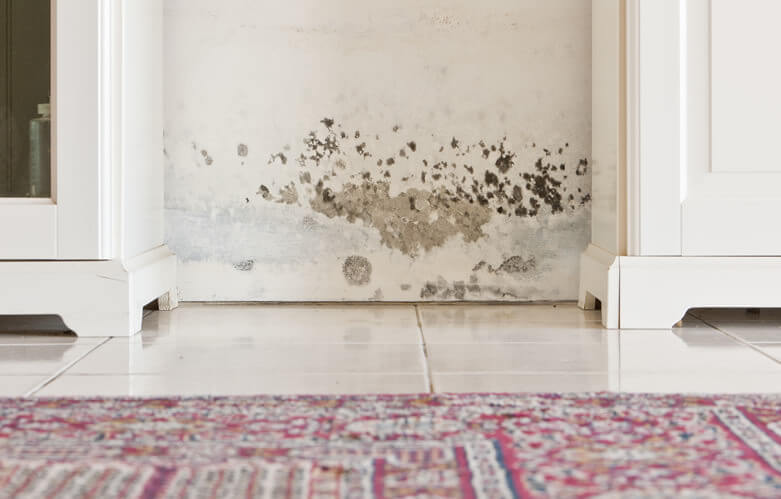As we mentioned in a past column, summer is the most suitable season for mold…

Vermiculite insulation : Does your vermiculite insulation contain asbestos?
If your home was built or renovated before the 1990s, it is difficult to guess the method of insulation chosen as there were numerous options: fiberglass batt insulation, blown in cellulose, sprayed polyurethane foam or even vermiculite. This latter choice, popular between the 1940s and 1980s, may prove problematic depending on its origin, as it may contain amphibolic asbestos fibers. And you, do you know what insulating product was used in your home? Read our article and learn more about vermiculite and how to recognize it.
Asbestos in your attic vermiculite insulation?
Buy your kit online and do it yourself
to save both time and money.
Similar to mica, vermiculite comes in the form of small granules whose color varies from silver-gold to gray-brown (see photo below). If you discover a similar substance between the joists of your roof, it’s a safe bet to say that it is insulated with vermiculite. If your home was built before the 1990s, your vermiculite insulation may contain amphibole asbestos fibers. To be sure, make your way to the attic to see the nature of the attic insulation in your home. If you find vermiculite, you will need to move on to the next step of determining whether or not it contains amphibole asbestos.

Vermiculite insulation product from the Libby mine in Montana is known to contain high levels of amphibolic asbestos. Extracted from the mine between 1920 and 1990, this vermiculite insulation was sold mainly, but not exclusively, under the trademark Zonolite ® Attic Insulation. In its good years, the Libby mine accounted for more than 70% of the world’s vermiculite production. The vermiculite attic insulation products from this mine have been used very little since the mid-1980s and have not been available for a good ten years.

The main problem with the asbestos contained in vermiculite insulation is that its fibers are very friable and break off easily. At the slightest movement or agitation of the insulation, the light asbestos fibers are thrown in the air where they become likely to be breathed by the occupants. The severity of the effects of exposure to asbestos depends directly on the concentration and size of the fibers in the air, the duration and frequency of exposures and the time when the first exposure occurred. Inhaled in large quantities, asbestos fibers from the vermiculite insulation can cause the formation of scar tissue in the lungs which hinders breathing (asbestosis) and even lead to the development of lung cancer.
However, it should be noted that construction workers who often come into contact with products containing asbestos such as those working on the removal of contaminated vermiculite insulation are much more at risk than the occupants of a house. In general, the latter do not often go in the attic where they are more likely to disturb the vermiculite insulation and thus stir up asbestos fibers and consequently to breathe them in. But health hazards are not the only drawback for homes where vermiculite is found: its mere presence can be a hindrance in a real estate transaction.
Imagine putting your home on the market and that a couple of potential buyers have a pre-purchase inspection done by a building professional. A good home inspector should be able to identify the vermiculite, raise the alarm and strongly recommend proceeding with the analysis of a sample. Imagine now that the result is positive for asbestos. Potential buyers require you to remove the contaminated vermiculite insulation or reduce your price accordingly. And how much will this cost you? It can range from a few thousand dollars to a few tens of thousands of dollars depending on whether the insulation is only in the attic or whether it’s also in the walls, which is more difficult to remove.
If you know you have vermiculite as insulation in the attic, why not have a sample analyzed and know for sure once and for all? If the results are negative, you can hold on to the laboratory report to reassure potential buyers in the event of a real estate transaction and justify your sale price.
If, on the contrary, the results show the presence of asbestos in the vermiculite insulation, at least you will know where you stand and will be able to act without delay to minimize the impacts on your health and that of your loved ones. To do so, you can prevent anyone from going into the attic without a proper mask, do not store anything in the attic to minimize comings and goings and make sure to seal all cracks, holes and such openings between the living areas of the building and the attic. This will minimize the risk of exposures to amphibolic asbestos fibers suspended in the air. An excellent way to identify the openings between the two areas is to perform an infiltrometry test (contact us for more information on the infiltrometry test).
If you have any doubts about the nature of your insulation or if you have vermiculite in the attic and want it analyzed, we invite you to contact our customer service. Our inspectors are there to collect the sample for you.
If it is easy for you to move around in the attic, go with our do-it-yourself vermiculite analysis service now available online. Take advantage of our promotion to do it yourself and save time and money. Furthermore, buy it online and get twice the AIR MILES miles!
Click here to learn more.
Did you know that…
- A cigarette filter patented in 1936 used asbestos as a filter agent. The brand that used them boasted of offering a safe cigarette because of the presence of a filter…
- The 1939 film The Wizard of Oz is well known, but few people know that the artificial snow used in it was made of asbestos fibers…



